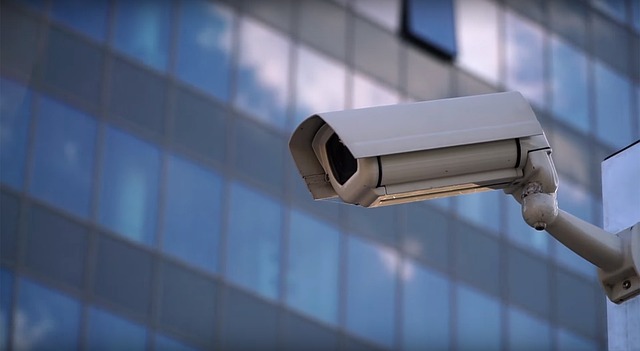In the digital age, video transmission is prevalent, but it poses security risks without encryption. 24/7 remote surveillance, combined with robust encryption standards like AES and RSA, safeguards video data from interception, tampering, and malicious activities. Real-time streaming protocols, such as RTSP, further protect video streams through integrated surveillance and encryption features. Regular updates are crucial to counter evolving cyber threats, ensuring continuous protection and swift adaptation to new security landscapes. 24/7 remote surveillance and strong encryption are key to securing video transmission, maintaining data integrity, and privacy in today's digital world.
In today’s digital age, secure video transmission is paramount, especially with the rise of 24/7 remote surveillance. Understanding the need for encryption in video data protection is crucial to safeguard sensitive information from malicious actors. This article explores the critical role of 24/7 surveillance in enhancing cybersecurity and delves into various encryption techniques vital for secure video streaming. We’ll discuss implementation strategies and maintenance protocols to ensure continuous protection in a dynamic threat landscape.
Understanding the Need for Encryption in Video Transmission
In today’s digital age, video transmission has become an integral part of our daily lives, from security cameras enabling 24/7 remote surveillance to live streaming and video conferencing. However, with this increased reliance comes heightened security risks. Unencrypted video data is vulnerable to interception and tampering, posing significant threats to privacy and data integrity. Malicious actors can exploit unsecure transmission channels to steal sensitive information, disrupt services, or even manipulate evidence in critical situations. Therefore, understanding the need for encryption in video transmission is paramount.
Encryption acts as a robust shield, converting understandable data into an encoded format that requires a unique key for decryption. This ensures that even if unauthorized parties gain access to the transmitted data, they won’t be able to make sense of it without the correct key. By implementing strong encryption standards, organizations can safeguard their video surveillance systems, protect intellectual property during transmission, and maintain the confidentiality of personal or sensitive information captured on camera.
The Role of 24/7 Remote Surveillance in Cybersecurity
In today’s digital age, where video transmission is ubiquitous, ensuring secure data transfer has become paramount for cybersecurity. One critical component enhancing this security is 24/7 remote surveillance. This continuous monitoring allows for real-time detection of any unauthorized access or malicious activities, enabling immediate response and mitigation. By leveraging advanced encryption techniques alongside 24/7 remote surveillance, organizations can safeguard sensitive video data from potential threats.
The integration of 24/7 remote surveillance into cybersecurity strategies offers several advantages. It provides a proactive approach to security, as it allows for the identification of vulnerabilities or suspicious behaviors before they escalate. Additionally, this round-the-clock monitoring ensures that critical systems are constantly protected, filling gaps that static security measures might leave unaddressed. Consequently, organizations can maintain a robust defense against evolving cyber threats and protect their video transmission infrastructure effectively.
Types of Encryption Techniques for Secure Video Streaming
In the realm of secure video transmission, encryption plays a pivotal role in safeguarding content from unauthorized access. Among various techniques, 24/7 remote surveillance and encryption protocols like AES (Advanced Encryption Standard) and RSA (Rivest-Shamir-Adleman) stand out for their robust security features. AES, with its ability to encrypt data blocks efficiently, ensures that each segment of the video stream remains secure even as it’s transmitted over networks. On the other hand, RSA offers a key-based approach, providing both encryption and digital signatures for data integrity verification.
For real-time and high-bandwidth applications, specialized streaming protocols like RTSP (Real Time Streaming Protocol) incorporate encryption mechanisms to ensure 24/7 remote surveillance and protection against interception. These protocols enable secure access to video streams, allowing users to monitor and manage content remotely while maintaining privacy and security. Furthermore, hybrid approaches that combine traditional encryption with protocol-specific safeguards offer comprehensive protection for video transmission in diverse environments.
Implementing and Maintaining Encryption Protocols for Continuous Protection
Implementing and maintaining encryption protocols is a continuous process essential for ensuring secure video transmission. These protocols act as the first line of defense against potential cyber threats, safeguarding sensitive data in an increasingly digital world. By incorporating robust encryption methods, such as AES (Advanced Encryption Standard) or TLS (Transport Layer Security), organizations can protect video content during transit, rendering it unreadable to unauthorized users. This 24/7 remote surveillance ensures that even if a breach occurs, the stolen information remains meaningless without the decryption key.
Regular updates and patches are vital to keep encryption systems effective. As cybercriminals continuously adapt their tactics, so too must the security measures. This involves promptly addressing vulnerabilities discovered in encryption algorithms and protocols, applying security patches, and updating software and hardware infrastructure. A well-managed encryption framework allows for seamless 24/7 remote surveillance, continuous protection, and swift adaptation to evolving cybersecurity landscapes, ultimately fortifying video transmission against emerging threats.
Cybersecurity encryption is an indispensable tool for protecting video transmission data. With the increasing reliance on 24/7 remote surveillance, ensuring secure communication becomes paramount. By employing robust encryption techniques like AES and RSA, organizations can safeguard their video streaming content from unauthorized access. Implementing and maintaining these protocols requires a comprehensive strategy that includes regular updates and key management, ensuring continuous protection against evolving cyber threats.
